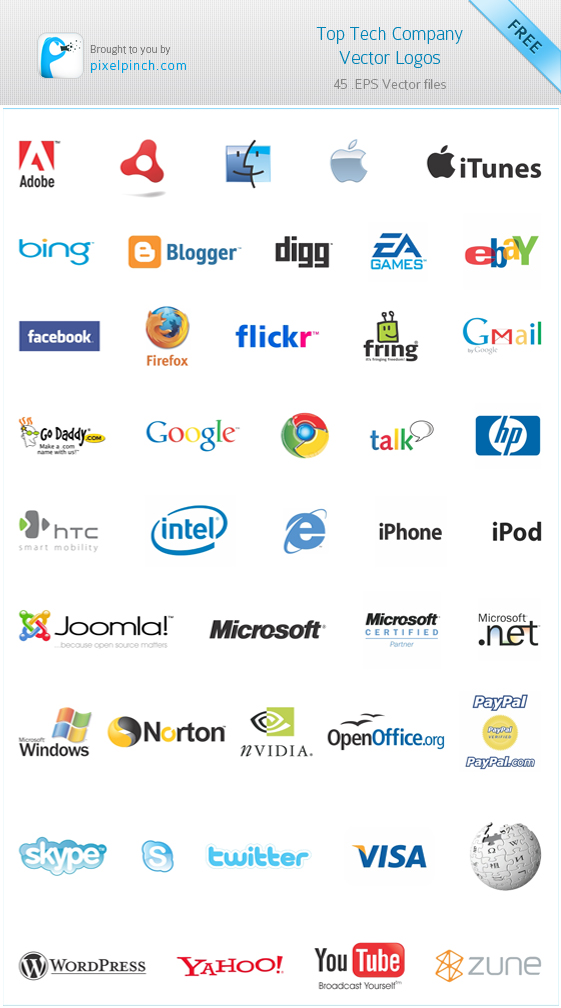
Eaze Promises Pot Delivery Anywhere In San Francisco
Sarah Buhr @sarahbuhr
Several states are starting to ease up on marijuana use, or even outright legalizing it. While there are places like Missouri where you can find Columbia’s top cannabis physicians but still require a medical marijuana card for their dispensaries, Washington, DC recently decriminalized weed. Like they do in California, people still need a card to take a puff but it’s 100% legal without written permission in both Colorado and Washington State. The same is the case for ohio medical marijuana. While many states offer dispensary services, a new SF-based startup, Eaze, promises delivery right to your door in less than 10 minutes.
Me to friend over text about Eaze: Did you know there’s an SF startup promising to deliver medical marijuana right to your door?
Her: Wuuuut??? That’s a first.
Me: I don’t have a license to buy that sort of thing.
Her: Which is why you turn to me.
Me: Obvi. Mind checking it out? Eazeup.com
Her: WaaS Weed as a Service. Brill. Should I get Berry White or Mango Kush?
Me: OMG!
Her: Okay, app verified I’m legal.
Me: So what now?
Her: Now my ETA is 4 mins??? But I didn’t order anything yet and it’s weird.
Update from her: Wait, I’m still pending?
Her: Site is frozen.
Her: You know there’s a lot of excitement about this at the office right now. No one’s going to lunch until our delivery is here. I’m getting some phat nugs.
Her: Now it’s 6 minutes
Me (a few minutes later): Where is delivery now?
Her: 5 mins. I’ve emailed support. I have no idea what I ordered or that I checked out.
Her: Wait now it seems I’m verifed, “Congratulations! We have successfully verified your Medical Marijuana eligibility and you can now order Medical Marijuana through Eaze.”
Her: Now it says 4 mins. The tension is running high in the office.
Her: Says he’s a block away.
Me (14 mins later): Okay now?
Her: The dolphin is in the jacuzzi.
Me: Okay then…
Started by former Yammer sales director Keith McCarty, Eaze is an Uber-like medical marijuana delivery service with an app that tells you when your “caregiver” (that is, delivery driver) will arrive with the goods at your door.
The drugs can only be delivered to those with a legal medical marijuana card. Once a user is verified that they have a legal license to buy in the state of California, they can choose from a variety of strains and quantities.
“When I told my parents about my idea for Eaze, they accused me of becoming a glorified drug dealer,” McCarty says. He told me he actually started the service because of a marijuana strain called “Charlotte’s Web” intended to treat children with epileptic seizures.
“Medical marijuana and CBD products like those on LaurelCrest can be used to treat health conditions,” McCarty says. “These are real people with real medical conditions that need this medicine, and it has been really exciting and gratifying to talk with them, and know that we’re doing something to help.”
Eaze spokesperson Caroline Vespi says choosing to make this a delivery service rather than a dispensary helps make taking the medicine more convenient to patients. She says Eaze has partnered with dispensaries around town for now and that prices through Eaze are comparable to those you might find in those dispensaries. An 1/8 is about $50, for example; there’s no additional fee for delivery to a patient’s door.
The plan, says Vespi, is to carry out the service in SF for now and then later roll it out (heh) in Southern California as well as Colorado and Washington. “We’ll deliver both medical and recreational marijuana there, according to the laws in those states,” she says. So those in Colorado will have to be at least 21 years old in order to become Eaze customers.
“I get why people might have a negative initial view of the marijuana business. It’s been that way in our society for a long time, but times are changing,” says McCarty. Stores that sell marijuana products are beginning to look into brands such as cannabis promotions, as a way to promote their products. When people begin seeing each other smoking marijuana, it will become normal and therefore more popular.
The New York Times editorial board asked for a lift on the marijuana prohibition just this week. While the White House disagreed with the Times’ ask, there’s a lot more support for legalization than there ever has been in the U.S.
A recent Pew Trust survey also indicates that the majority of Americans (54%) now favor the legalization of marijuana. Support for legalization is even higher (69%) among Millenials.
Windows XP falls below 25% market share while Windows 8.1 loses share for the first time
Emil Protalinski
espite support for Windows XP finally ending three months ago, the ancient OS has only now fallen below the 25 percent market share mark. To add to the bad news for Microsoft, after only nine full months of availability, its latest operating system version, Windows 8.1, has lost share for the first time.
The latest market share data from Net Applications shows that Windows 8 and Windows 8.1 lost a combined 0.06 percentage points (from 12.54 percent to 12.48 percent) between June and July. More specifically, Windows 8 slipped 0.01 percentage points (from 5.93 percent to 5.92 percent), while Windows 8.1 dipped 0.05 percentage points (from 6.61 percent to 6.56 percent).
There is no surprise that Windows 8, which saw its biggest gain in August at 2.01 percentage points and its biggest loss in November at 0.87 percentage points, continues to slip. The fact that Windows 8.1 has managed to lose share, however, may raise eyebrows. While it’s possible the dip is just a blip, it doesn’t bode well for Microsoft, especially given that the upgrade path from Windows 8 to Windows 8.1 is merely a free download away.
Meanwhile in July, Windows 7 managed to grab an additional 0.67 percentage points (from 50.55 percent to 51.22 percent). Windows 8 and Windows 8.1 usually do better combined than Windows 7 does, but some months the opposite happens, and the last three months haven’t been good ones for the new releases. Microsoft will likely one day struggle to woo users off Windows 7, just like it is currently trying to do with the headache that is Windows XP.
Speaking of earlier versions, Windows Vista managed to gain 0.10 percentage points (from 2.95 percent to 3.05 percent). Windows XP dropped 0.49 percentage points (from 25.31 percent to 24.82 percent). While it’s great to finally see it fall under the 25 percent mark, the drop is nowhere near as large as it should be.
In 2013, Windows lost share every month except for March, July, and November. So far in 2014, Windows has only slipped in January and April; it gained another 0.15 percentage points (from 91.53 percent to 91.68 percent) in July. OS X fell 0.09 percentage points (to 6.64 percent), while Linux slipped 0.06 percentage points (to 1.68 percent).
Net Applications uses data captured from 160 million unique visitors each month by monitoring some 40,000 websites for its clients. StatCounter is another popular service for watching market share moves; the company looks at 15 billion page views. To us, it makes more sense to keep track of users than of page views, but if you prefer the latter, the corresponding data is available here (mobile and desktop operating systems are combined).
Beats Music CEO Ian Rogers to Also Head Up iTunes Radio
Juli Clover
Apple’s $3 billion acquisition of Beats was finalized today, and as the two companies merge into one, the positions some former Beats employees will take on at Apple are becoming clearer.
According to a new report from The Wall Street Journal, Ian Rogers, who serves as the CEO of Beats Music, will take Apple’s own iTunes Radio streaming music service under his wing, heading up both streaming music services. Rogers will likely report to Eddy Cue, the SVP of Internet Software and Services at Apple, who oversees all of Apple’s content stores.
Rogers, a former Yahoo executive, will run both teams to create cohesion in Apple’s streaming-music options, according to the people familiar with the matter. Pandora and Spotify, the two-biggest streaming music services, each offer both a free ad-supported service and a subscription-based service.
As previously reported, Beats co-founders Jimmy Iovine and Andre Young (aka Dr. Dre) are also expected to take on senior roles at the company, and while it remains unclear exactly what the duo will do at Apple, Iovine may also become involved with iTunes, securing deals and marketing opportunities.
Earlier today, Apple posted a message on its website welcoming the Beats team to the family, as Beats shut down its own online store. While many former Beats employees are transitioning to Cupertino or continuing to work in a Los Angeles office, approximately 200 employees in human resources, finance, and other areas where there was overlap with Apple have only been given temporary positions as the company tries to find new roles for them.
Microsoft sues Samsung over patent cross-licensing disagreement
Josh Ong
Microsoft revealed today that it has sued Samsung (PDF) in an attempt to enforce a patent cross-licensing agreement the two companies reached in 2011.
By Microsoft’s account, Samsung is balking at licensing fees after its smartphones became more successful than expected. The lawsuit alleges Samsung was late in paying its second-year royalties and then refused to pay interest. Microsoft’s acquisition of Nokia appears to be the reason that Samsung cited for not having to pay. With the lawsuit, Microsoft hopes that the court will enforce the contract.
We’ve reached out to Samsung for comment on the issue.
Microsoft spent years leveraging its patent portfolio against Android phone makers, eventually earning royalties from most of Google’s best partners.

Google Planning to Separate Photos From Google+
Pete Pachal
Google will soon be cleansing Google+ from another service, according to a new report.
Bloomberg reports the company is planning to make Google+ Photos a standalone service, which would mean a Google user wouldn’t need a Google+ account to save and share photos with Google. Photos would also presumably have their own app and portal separate from Google+.
Google is extracting photos from Google+ in a bid to attract more users, the report says, citing anonymous sources. The new service would still work with the social stream on Google+, although it may also be rebranded as part of the move.
If true, the report aligns with two clear trends:
Google has been moving to downplay Google+ as a brand and has begun separating some services from the social network. It recently dropped the Google+ requirement for Google Apps subscribers to use Hangouts, and the service was essentially a no-show at the Google I/O 2014 developers conference.
Large, multi-featured services are spinning off individual features into standalone apps. Both Facebook and Foursquare have recently separated aspects of their user experiences into simpler, more focused apps. Facebook, for example, will soon require mobile users to download a separate app for messages.
Photos have been one of Google+’s strongest features. The service was one of the first to offer automatic backup of mobile photos and videos, and in 2013, former Google+ chief Vic Gundotra rolled out several well-received upgrades, including ways to automatically organize, touch up and create GIFs from photos saved to the service.
When asked about the report, a Google spokesperson gave the following emailed statement, “Over here in our darkroom, we’re always developng new ways for people to snap, share and say cheese.”

